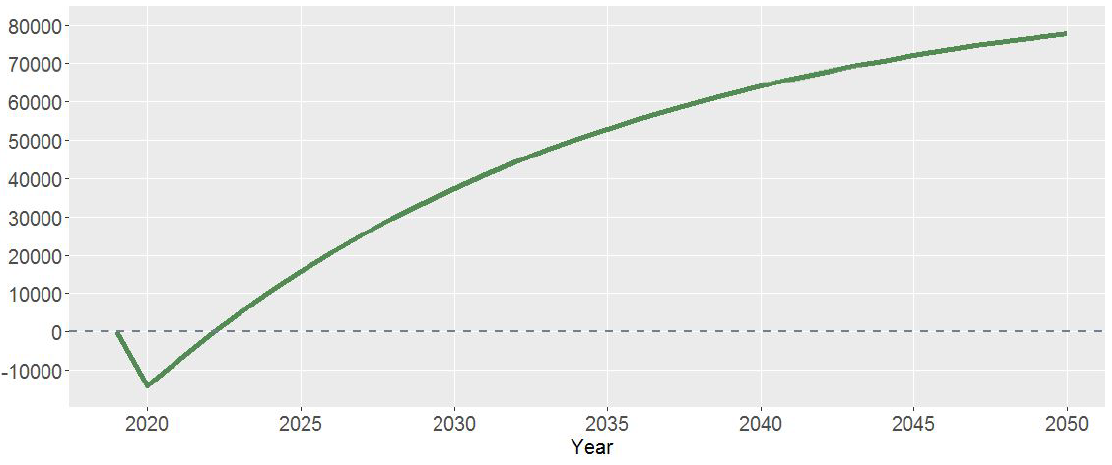Ethiopia: Fodder and feed improvement
Fodder and feed improvement is regarded as a promising adaptation strategy that, according to interviewed experts, has high potential for upscaling in Ethiopia. Fodder and feed improvement is an umbrella term subsuming different strategies and technologies to improve nutritional quality, digestibility, quantity and availability of fodder and feed resources for livestock production. These include, for example, integration of pasture and forages into farm production, establishing fodder banks with improved forages and fodder trees, treatment of crop residues (e.g. with urea), silage and hay production, irrigation for production of off-season pasture and feed crops, improved grazing land resources management, increase of administering high-quality feed concentrate (Birhan & Adugna, 2014; Birhanu, Girma, & Puskur, 2017b).
To improve fodder and feed, a number of adaptation strategies have proven successful in Ethiopia, for example: Improved and high-yielding forage varieties, intercropping grasses and cereals with legumes, cultivation of irrigated fodder banks, natural pasture improvement through removing of invasive weeds, temporal zero-grazing and cut-and-carry feeding regimes on degraded pastures to restore and increase carrying capacity. Such strategies can boost livestock production, resilience and farmer income.
We conducted a cost-benefit analysis of one specific strategy to improve fodder for livestock in Ethiopia: irrigated Napier grass. Cultivating Napier grass and irrigating it was shown to be highly cost-effective. Importantly, the farmer’s investment in Napier grass will pay off after three years when the break-even point between net costs and net benefits is reached. It thus has a high and fast return to investment, as the following figure visualises.

While the examples above demonstrate the potential to increase livestock production even under a changing climate, the adoption of improved feed and fodder management strategies across the country so far remains rather low (Birhanu et al., 2017a), which was also confirmed by experts interviewed for this study. Yet, stakeholders and experts consistently expressed high interest in this measure throughout interviews, the survey and the workshop. In fact, due to the high importance and increasing policy awareness of this topic, experts interviewed see high upscaling potential for adoption of improved feed technologies in the country. Not all concrete strategies can be applied everywhere, irrigated Napier grass for instance may be difficult to implement in the lowland pastoralist and agro-pastoralist regions, but suitable strategies and improvements over the current practices can be found for all regions.
However, several issues need to be addressed to achieve this goal. Insufficient financial means, lack of market access and infrastructure and limited capacity among extension agents to provide adequate information and training are common constraints to technology adoption in smallholder farming that also apply to livestock production (Gebremedhin, Ahmed, & Ehui, 2003).
Table 4 lists some key potential co-benefits or maladaptive outcomes that may accrue with improved fodder and feed.

All in all, we conclude that looking at this specific adaptation strategy, action is much more profitable than inaction, although other improved fodder and feed strategies or factors, such as prices would change the results.
References
- Birhan, M., & Adugna, T. (2014). Livestock feed resources assessment, constraints and improve-ment strategies in Ethiopia. Middle-East Journal For Scientific Research, 21(4), 616–622.
- Birhanu, M. Y., Girma, A., & Puskur, R. (2017a). Determinants of success and intensity of livestock feed technologies use in Ethiopia: Evidence from a positive deviance perspective. Technological Forecasting and Social Change, 115, 15–25.
- Birhanu, M. Y., Girma, A., & Puskur, R. (2017b). Determinants of success and intensity of livestock feed technologies use in Ethiopia: Evidence from a positive deviance perspective. Technological Forecasting and Social Change, 115, 15–25.
- Gebremedhin, B., Ahmed, M., & Ehui, S. (2003). Determinants of adoption of improved forage technologies in crop-livestock mixed systems: Evidence from the highlands of Ethiopia. Retrieved from https://cgspace.cgiar.org/ handle/10568/27820.


